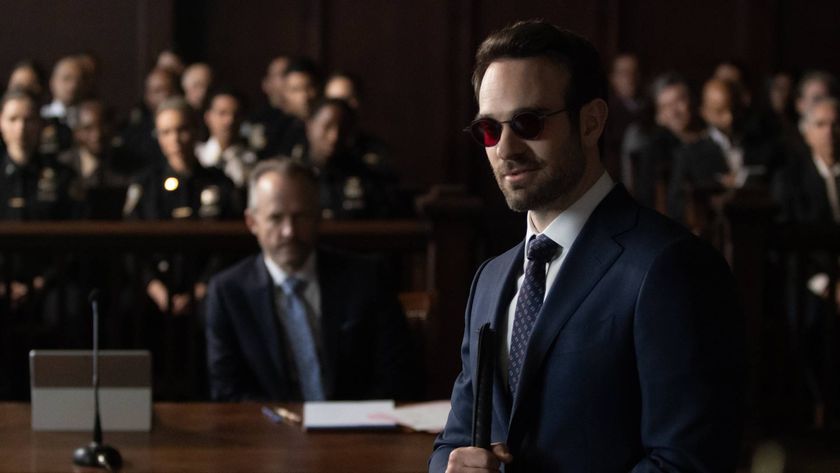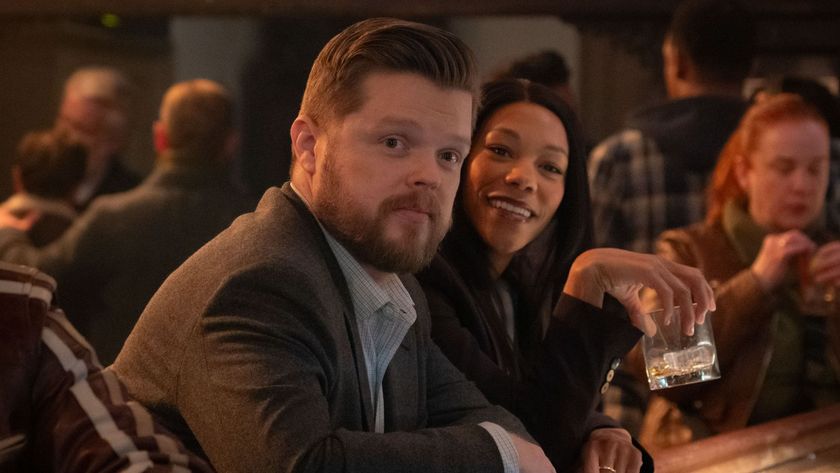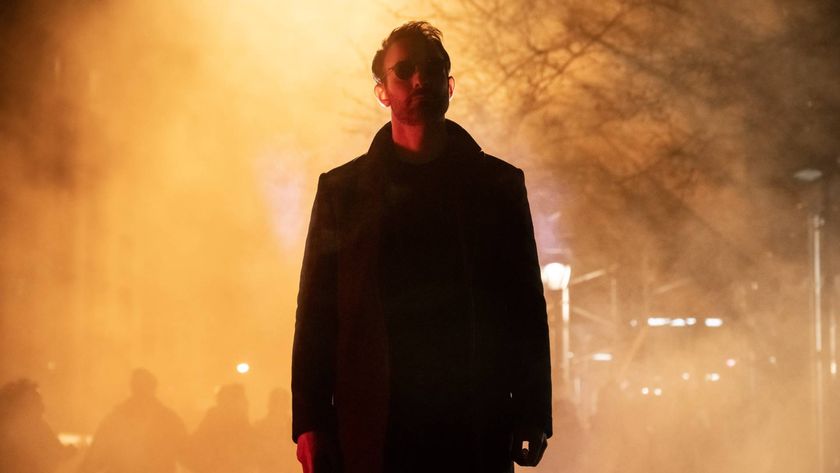Time to spy: On the set of Tenet with Christopher Nolan
Christopher Nolan puts his own unique spin on the spy genre with Tenet, the most anticipated blockbuster of the year. Total Film goes on set to witness the explosive action first hand
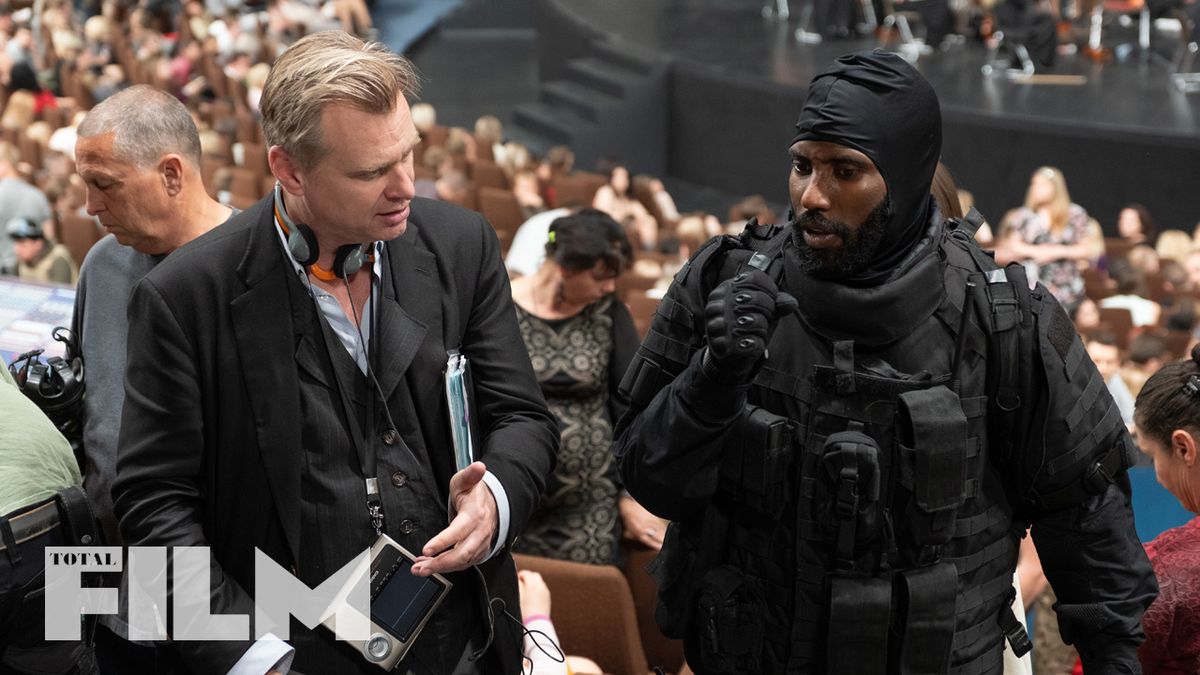
The sun is setting, but the day has just begun. It’s September 2019, and Total Film is at an anonymous logistics airport in Victorville, California. We’re here to watch nighttime filming on ‘Merry Go Round’, the shooting codename for Tenet – the latest big-budget blockbuster original from master filmmaker Christopher Nolan. All we know is that it’s an action epic, evolving from the world of international espionage. And that’s pretty much all we’ll know... for now.
As the orange sunset fades to black, Emma Thomas (Nolan’s wife and longtime producing partner) acts as our guide to the set, while preparations are made for a practical set-piece on an all-too-rare scale. Tonight, Victorville is doubling for Oslo. Blue lights strobe from ‘politi’ cars and an ‘ambulanse’, as a truck sprays the ground with water, replicating the rainy Norwegian capital.
Oh, and there’s the small matter of the 747 jet that’s been crashed into the side of a hangar. Not a partial fibreglass replica of a jet. Not CGI. This is a real aeroplane, bought by the production. It bears a (fictional) Norskfreight logo. Debris is scattered underneath, the top draped with shreds of hangar roof. The left wing, in particular, looks worse for wear. The scale is jaw-dropping.
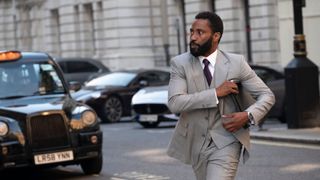
Nolan, wearing a regulation hi-vis vest over his trademark blazer, surveys the scene, checking in with department heads. He’s remarkably relaxed, given the circumstances (did we mention the full-size plane on the set?). Despite the enormity of the undertaking, the first shot is set up remarkably quickly, reflecting the precision and decisiveness Nolan is so famous for. No long waits like on many other film sets; we’re off with a literal bang.
With a shout of “here we go!” the first take gets underway... Flames ignite along the plane’s right wing, and one of the left-side jet engines roars to life, whirring and sparking and almost rocking itself free until it explodes into flames and black smoke. The faux emergency services screech in, hosing at the wreckage, before cut is called. Nolan checks playback on a small monitor worn around his neck (no traditional ‘video village’ here), as the scene is reset for a couple more takes. On a set-up of this magnitude, it’s impossible not to think of the Orson Welles quote about the backlot being “the biggest train set a boy ever had!”
“Oh, very much,” agrees Nolan when we catch up later, in April 2020, during the final stages of post-production. He’s talking via phone from the office at his LA home. “To be able to have a 747 at your disposal, and to ultimately perform stunt work with it? It’s every kid’s dream. Other than the creative tone you’re trying to get through this type of work, the experience of getting to play with these things on set, and giving that to the actors... it just brings something to the process that greenscreen and CG never can.”

For Nolan, it’s a way to get the actors and crew more engaged with the reality of what they’re shooting. “It’s a really common complaint from crews that greenscreen days are just some of the most miserable days on any set,” he continues. “You turn up to the studio, and you stand in front of a green screen for days on end. I’ve heard that from almost every crew member I’ve ever worked with. It’s not a complaint you hear on my films. I think it’s why people feel very, very engaged. They’re seeing what is being created for the audience. They’re getting to be the first audience for it.”
Sign up for the Total Film Newsletter
Bringing all the latest movie news, features, and reviews to your inbox
Even with Nolan’s acknowledged preference for practical filmmaking and his penchant for spectacle, buying a plane wasn’t always on the cards. “I planned to do it using miniatures and set-piece builds and a combination of visual effects and all the rest,” recalls Nolan. While scouting for locations in Victorville, the team discovered a massive array of old planes. “We started to run the numbers... It became apparent that it would actually be more efficient to buy a real plane of the real size, and perform this sequence for real in camera, rather than build miniatures or go the CG route.”
Call it a spur-of-the-moment purchase. “It’s a strange thing to talk about – a kind of impulse buying, I suppose,” laughs Nolan. “But we kind of did, and it worked very well, with Scott Fisher, our special-effects supervisor, and Nathan Crowley, the production designer, figuring out how to pull off this big sequence in camera. It was a very exciting thing to be a part of.”
It wouldn’t have been that way if we hadn’t been able to use a real plane
Emma Thomas on Tenet
Emma Thomas’ job exists at the challenging point where writer/director Nolan’s imagination becomes reality. “We’ve actually built a number of interior plane sets over the years on different movies,” says Thomas when we speak months after the shoot. “You think, ‘Well, they should be easy, right?’ But they’re really not. They’re really expensive. It’s always a nightmare. And so when I read that sequence – although I was massively excited by it, because it read spectacularly – I was also like, ‘Really, Chris? Really?’”
That chance scouting of a “plane graveyard” led to the real-deal option TF saw on set. “Now that I’ve seen the film, it’s so, so spectacular,” adds Thomas. “It absolutely is everything that I read in that scene, and more. And it wouldn’t have been that way if we hadn’t been able to use a real plane to do it.”
Back on the Victorville set, after several efficient takes of the engine explosion, it’s time for the reverse-angle shot. More than 90 extras, not counting stunt performers, and actor Himesh Patel (who strummed to stardom in Danny Boyle’s Yesterday), wearing overalls and safety gear, are marshalled by Nolan, between sips of Earl Grey tea from his pocket flask. Opting to roll straight into the take without rehearsal, a throng of airport workers reacts to the bang, which is now being replicated by a huge lighting rig emitting an orange blast. The ‘explosion’ to react to is indicated by Nolan himself, holding an airhorn aloft.
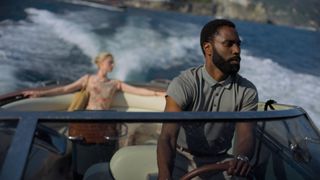
Again, takes are collected with ease and alacrity. “I’ve always worked that fast,” states Nolan. “I started out in no-budget and in independent films, where you had to work fast. What I learned as I first got into big-scale filmmaking – Batman Begins being the first really large-scale film that I was involved in – a lot of it is down to your collaboration with your director of photography, in that case Wally Pfister. He’s a very, very fast director of photography, as is Hoyte van Hoytema, who I’m working with now. What we found on the bigger films is, sometimes having less time forces interesting creative choices on you. The thing you can never rush and you can never accelerate are the safety issues.”
“There’s one thing that he has never let go of, and that is speed, and being light on his feet, and being nimble, and trying to keep the energy up,” confirms Thomas. “He just has no tolerance for sitting around. He’s not interested in that sort of filmmaking. A lot of that speed translates into the feeling you get when you watch the movie.”
The level of secrecy also sets Tenet apart from your standard set visit. Often a unit publicist will take TF through storyboards for the entire film, spilling every detail – but not here. We’re given next to no context for the action we witness. All we know is, despite epic appearances, this scene takes place early on in the film. “It’s so extreme that you would imagine it could be the huge crescendo of a big film like this,” laughs Thomas. “But no, this is fairly early on. Which tells you everything you need to know about the film!”
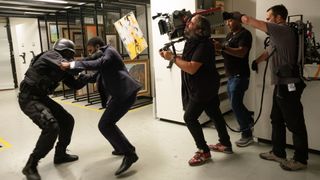
Even for a Nolan project, the need-to-know on Tenet is limited. As we gleaned from the official trailer launched in December 2019 (an earlier cinema-only teaser ran ahead of Fast & Furious: Hobbs & Shaw), Tenet stars John David Washington (BlacKkKlansman, TV’s Ballers) as a man on a mission with dizzyingly high stakes. He’s inducted into a mission after seemingly passing a test of bravery, with the aim of “trying to prevent World War 3”, with an outcome worse than a nuclear holocaust. The trailer also hints at some kind of time-travel or time-distortion elements: a boat goes backwards over waves, a car is flipped on to its roof before it bounces back to its wheels and continues driving in reverse, Washington is seen surveying a bullet-sprayed scene, before announcing that whatever happened here, “hasn’t happened yet”.
Then there was a prologue that played with IMAX screenings of Star Wars: The Rise Of Skywalker. In that scene, Washington is called in with a mystery team when an Eastern European opera house is stormed by terrorists. If you were lucky enough to catch the prologue, you’ll probably be left with more questions than answers. You get a sense of the tension and scope, without having much idea what’s going on.
Nolan had previously called Tenet, “No question... the most ambitious film we’ve made.” Filmed across seven countries, it boasts a huge international cast and large-scale action set-pieces. “It’s a film of great ambition and great scale that takes a genre, namely the spy film, and tries to take it into some new territory, and tries to take the audience on a ride they might not have had before, and might not be expecting,” he says. “But it uses the conceits of the genre to do that – not unlike the way with Inception we took the conventions of the heist genre, and used the audience’s familiarity with that to try to go into some more unusual, surprising areas. With Tenet, we’re looking at first and foremost giving the audience an incredible ride in the spy movie genre, but using the audience’s facility with following the conventions of that genre to push it into some interesting and unexpected territory.”
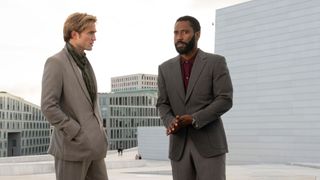
On the surface at least, Inception seems like the most obvious point of comparison from Nolan’s back catalogue: mystery mission; trailer packed with striking, beguiling imagery; sharp-suited leads. Thomas concurs, albeit with some hesitation due to some inaccurate online scuttlebutt. “It’s very much its own thing,” she says. “It’s in no sense a re-tread. But I think that there are elements of Memento. I think the obvious film I would compare it to is Inception, because it is a similarly globetrotting, mind-bending, huge... spectacular. But I read a bunch of stuff early on when people were speculating about what it was, and speculating that it was a sequel to Inception. And it’s very much not that. So I almost hesitate to compare the two. But when you look at where it sits in Chris’ body of work, I would say it’s in that vein.”
Any Nolan fan will know of his love of the spy genre, particularly the James Bond films. “I’ve wanted to do a spy film for a very, very long time,” he explains. “Since
I was a kid, really. Since I first started thinking about making films, I’ve wanted to do something in this genre.” The writer/director works in a way where he’ll sometimes file away an image or conceptual idea for later use. “Tenet brings together a lot of different things I’ve been thinking about for a long time,” he says. “Specifically, there are images and things in the film that I’ve been thinking about for at least 20 years... I’ve been working on the specifics of Tenet, in its current form, I’d say, for about six years. But some of the key ideas behind it, some of the key images, have been around for a lot longer than that.”
Nolan often puts on tone-setting screenings of old movies for cast and crew before filming, but chose to forgo that here. “Interestingly, this is one of the first films I’ve ever made where we didn’t do any screenings,” he says. “And the reason was, I think we all have the spy genre so in our bones and in our fingertips. I actually wanted to work from a memory and a feeling of that genre, rather than the specifics.”
There are images and things in the film that I’ve been thinking about for at least 20 years...
Christopher Nolan talks Tenet
There’s one film outside the spy genre that’s an unlikely inspiration point of sorts. “I have no idea whether this is true, but I sort of have this idea that if you look at Sergio Leone when he made Once Upon A Time In The West, there’s a slight feeling of... I’m not sure he watched any westerns while he was making it,” says Nolan. “It expresses his love for the genre that’s grown over years and years and years. And there’s something so fabulously heightened about the way he then engages with that genre. It’s the distillation of all these things in his past, and his impressions of the genre. I wanted the crew to dive into this film, in a very unique way, and to not really be influenced by things in a conscious sense, but to just let our love for the genre, and our love for the movies in general, feed into the ways in which we express things.”
This subconscious approach to the material meant 007 fan Nolan purposely didn’t go back to that well. “This is definitely the longest period of time I’ve ever gone in my life without watching a James Bond film. My love of the spy genre comes from the Bond franchise, and the Bond character very specifically. I know as much about the Bond films as Alan Partridge does,” he laughs. “It’s totally in my bones. I don’t need to reference the movies and look at them again. It’s about trying to re-engage with your childhood connection with those movies, with the feeling of what it’s like to go someplace new, someplace fresh. It actually has to take them somewhere they haven’t been before, and that’s why no one’s ever been able, really, to do their own version of James Bond or something. It doesn’t work. And that’s not at all what this is. This is much more my attempt to create the sort of excitement in grand-scale entertainment I felt from those movies as a kid, in my own way.”
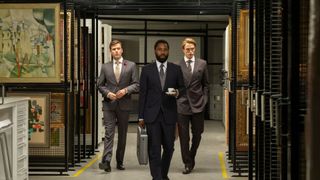
Another thing that sets Tenet apart from the Bond movies is John David Washington’s lead character (that early, cinema-only teaser trailer proclaimed that the “time has come for a new kind of protagonist”). “He’s a very American character, and that’s very important to me,” asserts Nolan. “There’s a different sensibility to the character at the heart of it. And the great thing is that once you have the script, once you have the casting, that starts to define what the movie is, and how the film feels, and what the freshness of the film is.”
Cut back to the Victorville set. With the shots of the exploding engine complete, TF is brought round to the front of the plane, to observe some filming with the lead actors. From this side of the scene, we watch Washington and co-stars Robert Pattinson and Elizabeth Debicki – who’s laid up under covers on a gurney – reacting to the explosion (in reality – Nolan shouting “Boom!”). Washington’s hidden under a black tactical suit, balaclava and oxygen mask, while Pattinson’s dressed in a dark shirt and brown slacks, a gun strapped to his chest. Takes are efficient again, even with the huge IMAX camera that’s being operated (as per Nolan’s style, the film is being shot on a combination of 70mm and IMAX film).
“That was a crazy night,” laughs Washington, although he puts the secret in secret agent when it comes to plot details. Asked about his character (whose name hasn’t yet been revealed), he takes a lengthy pause. “What I can say is that he is a determined man,” he says, before another long pause, and a throaty chuckle. “He is determined! I can say that. Oh, I can also say that he has a beard. He definitely has a beard.” While he’s willing to go into much detail about that luxuriant facial hair (coconut oil is the secret, apparently), like his character, he doesn’t yield easily.
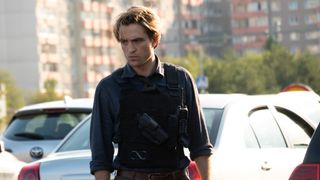
- The best sci-fi movies of all time
Pattinson remembers the plane sequence with a laugh. “You wouldn’t have thought there was any reality where you would be doing a scene where they just have an actual 747 to blow up! It’s so bold to the point of ridiculousness... I remember, as we were shooting it, I was thinking, ‘How many more times is this even going to be happening in a film at all?’”
Debicki, who confesses to doing “under-the-covers acting” that day, was also overwhelmed by the scale. “We read the scene, and we knew this was going to happen,” she says. “And then you find yourself standing on the tarmac, like we all were, and I remember Rob and J.D. and I were in awe. ‘Oh my God, they’re actually doing this. They’re actually going to do this!’ And they’re not cutting any corners, and we’re watching it happen. So I think that that’s one of the pretty remarkable things about working on a Nolan film. It’s that the thing you read on the page – you then come to work, and you’re actually seeing it in front of you, in the flesh. None of it is CGI.”
Physicality was crucial when it came to casting Washington in the lead. “I was a broken man when it was all said and done,” Washington explains. “But it was all well worth it. I joked with my brother about it often. He actually helped my mum get over her worry a little bit. We were basically laughing about how I’m going to die for this man, Christopher Nolan!”

“I’m not sure I quite realised just how big the demands would be,” Nolan laughs of Washington’s casting. “I knew that in taking on the spy genre, I knew that I wanted, I needed a creative partner in the lead who would be up for really getting in there, and getting the physicality of the character. Because that, to me, is very important. If I’m going to do a spy film, I don’t want to be doing it half-arsed; I want to be doing the most extreme things we can safely do. We’d want to be involving the actor in the action, and the physicality of the character needed to be part of the story.”
Nolan compares the experience to working with one of his previous leading men. “We really, really wanted to integrate the character into the action, very much in the way of the collaboration I had with Christian Bale, actually, on the Dark Knight trilogy,” he says. “The action was always trying to express something about the character. We were always trying to use Chris’ creativity and his commitment to the role to have the action mean something in the story.”
The aforementioned teaser trailer heralded Washington’s character as that ‘new protagonist’, which is certainly true in the context of Nolan’s previous work. “I think that John David’s protagonist is very, very different to any of the protagonists I’ve dealt with before,” he confirms. “I think he’s also very different to the conventional protagonist of a spy movie. We wanted to do something different with it, not just for the sake of it, but because of what the film deals with philosophically. Often, these sort of characters, these protagonists who are secret agents or are undercover, they’re portrayed as very cynical and hard-bitten characters. That’s certainly credible, and has some truth to it, but there’s always this slightly odd thing [where] at the same time, we’re looking at these figures as people who are willing to literally sacrifice their life for other people and for the greater good.”
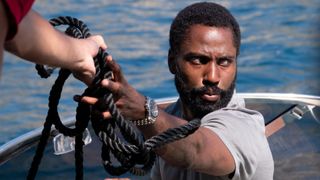
As the trailer suggests early on, Washington’s character puts his life on the line to run into the proverbial burning building for his colleagues. “I think he’s created this extremely well-rounded and sympathetic character,” says Nolan. “He’s just a wonderful guy for the audience to go with. You just want to follow this guy wherever he goes.”
While the cast are largely new to Nolan (Clémence Poésy, Aaron Taylor-Johnson and Dimple Kapadia also appear), fans of his previous work will find plenty to recognise (and we’re not just referring to an appearance by lucky charm Michael Caine). “As far as the ‘bigger picture’ idea of the film, and what it represents in, I suppose, a science-fiction sense... the film addresses ideas to do with time, although it is not a time-travel film per se... These are things I’ve been working on for a long time,” says Nolan. “And I think people who are familiar with my work will see Tenet as a combination of a lot of different threads of ideas, both philosophical and scientific, or just fun, quite frankly, ways of playing with genre.”
Just quite how it’ll play with time remains to be seen. Those rewinding visuals in the trailer and even the palindromic title treatment have set theories in motion, though it’s unlikely we’ll get a definitive answer until the film’s release. “Time is a preoccupation of Chris’,” is all Thomas will say. “And yes. This film does allow him to play in that arena in a way that he hasn’t before.” Nolan’s previous narrative gambits include Memento’s murder- mystery-in-reverse plotting and Interstellar’s black-hole time-dilation.
Pattinson makes the analogy of a plate-spinner. “There’s a point where you’re like, it’s kind of cool, and it becomes so insane that it’s almost frightening,” he laughs. “I sound like such a moron talking about this stuff. Because on top of the, uh – how would I even say this? Quite advanced theoretical physics; I think I’m allowed to say that – it’s just got a billion different ways to read it.” He gasps, breathless. “It’s so complicated; if it wasn’t Chris Nolan doing it, you’d be like, ‘This is an impossible movie.’”
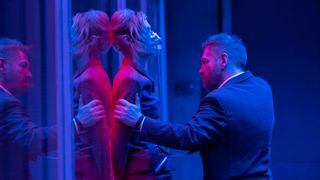
Kenneth Branagh talks in labyrinthine riddles when addressing his role in the film. “I suppose the trailer indicates that there’s a kind of Nolan paradox at the centre of the film, which is, ‘Try not to understand it, but to feel it,’” he tells TF. When asked if it’s fair to call him the antagonist to Washington’s protagonist, the answer is anything but linear. “I kid you not, I read this screenplay more times than I have ever read any other thing I have ever worked on,” he says. “It was like doing the Times crossword puzzle every day, I would imagine. Except the film and the screenplay didn’t expect you, or need you, to be an expert. In the playing of it, and in the scenes, he keeps upturning, or playing forward and backward, our expectations of what the character should be. So my conversations with him about my character were constant, because the character’s evolution was not set. It was a series of constant surprises.”
“It’s obviously genre-bending,” adds Washington. “It’s its own genre: it’s the Nolan genre.” He has a point. While Nolan is cinema’s foremost purveyor of originals, the films do form a genre unto themselves, with expectations of gargantuan set-pieces, mind-blowing ideas, and daring narrative structures.
It’s its own genre: it’s the Nolan genre
John David Washington
Back on set, we witness one more shot before the production breaks for food. Washington is doing high knees to limber up for moment that requires him to be dragged under a roller door. The paint on the door is touched up before being blasted with a hairdryer – the only moment on this set that’s like watching paint dry. When it’s ready, Hoyte van Hoytema gets in close with a shoulder-mounted IMAX camera. “Three, two, one... Action!” and Washington disappears under the door. It’s done in one take.
“Every time we would get to the end of a big sequence, you get that sense
of relief that you’ve achieved the impossible,” laughs Thomas. “And then you look at the schedule, and you’re like, ‘Oh, no, we’ve got another next week!’”
“That [aeroplane set-piece] would be the climax of a normal movie, and Tenet has, like, eight of those moments,” chuckles Pattinson.
- Not a subscriber to Total Film? Then head on over here to get the latest issues sent directly to your home/device
Tenet reaches UK cinemas on August 26 and US theatres on September 4. Before then, make sure you read up on our celebration of Inception's ending. This piece was originally in Total Film – never miss another feature by subscribing here.

I'm the Editor at Total Film magazine, overseeing the running of the mag, and generally obsessing over all things Nolan, Kubrick and Pixar. Over the past decade I've worked in various roles for TF online and in print, including at 12DOVE, and you can often hear me nattering on the Inside Total Film podcast. Bucket-list-ticking career highlights have included reporting from the set of Tenet and Avengers: Infinity War, as well as covering Comic-Con, TIFF and the Sundance Film Festival.
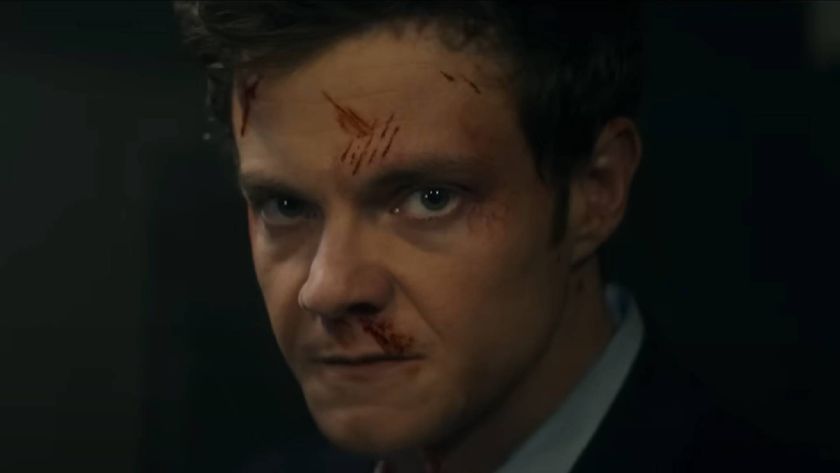
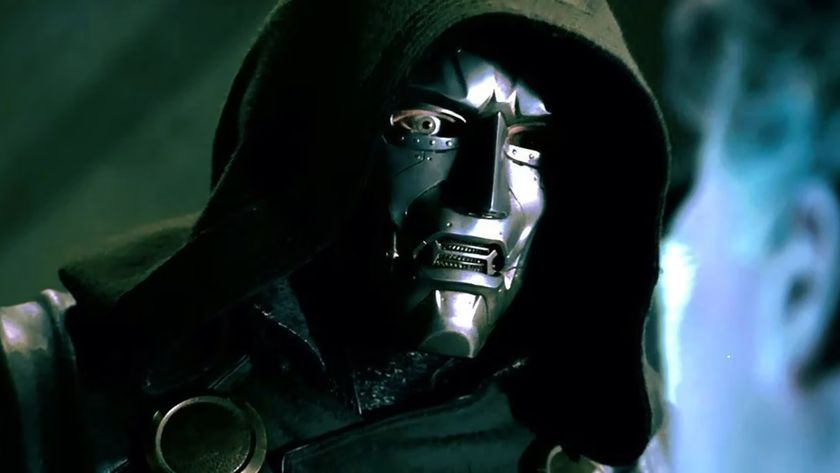
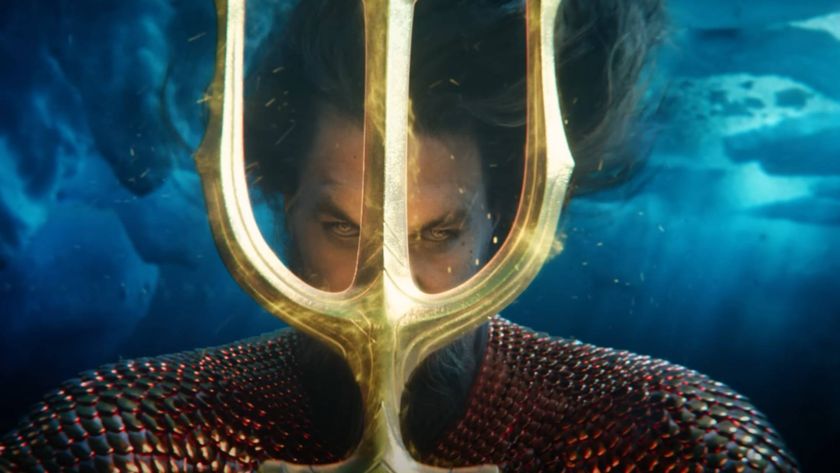
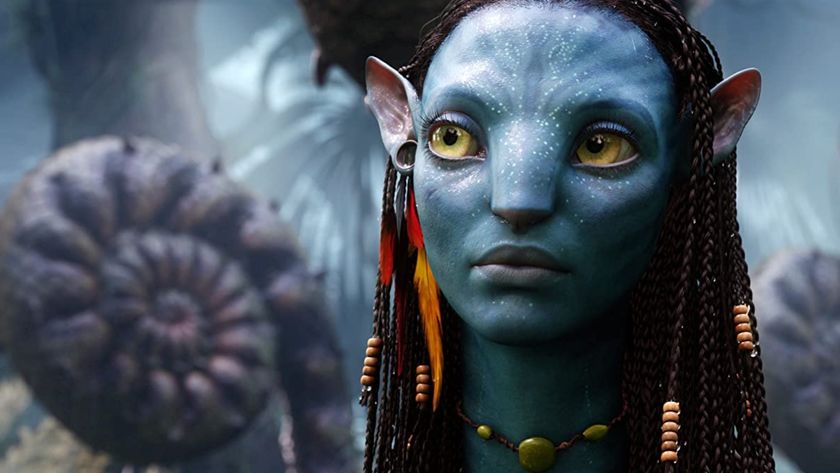
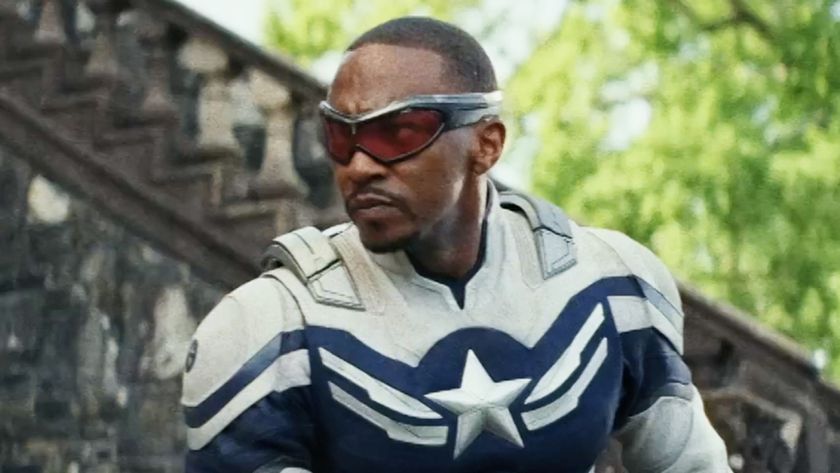
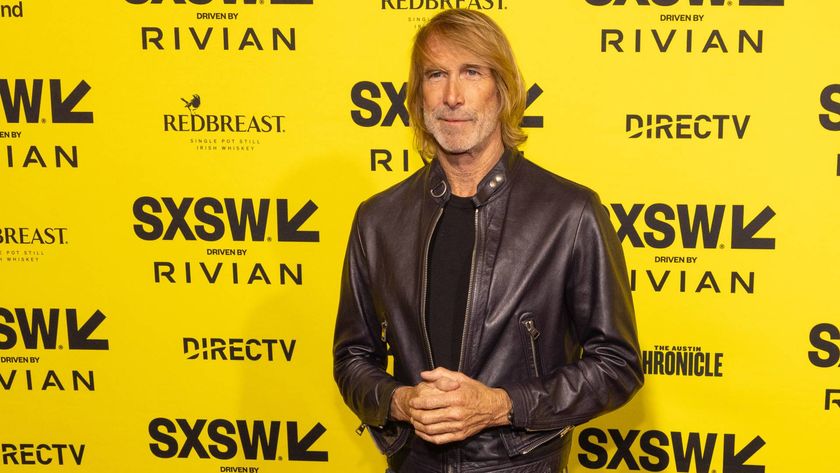
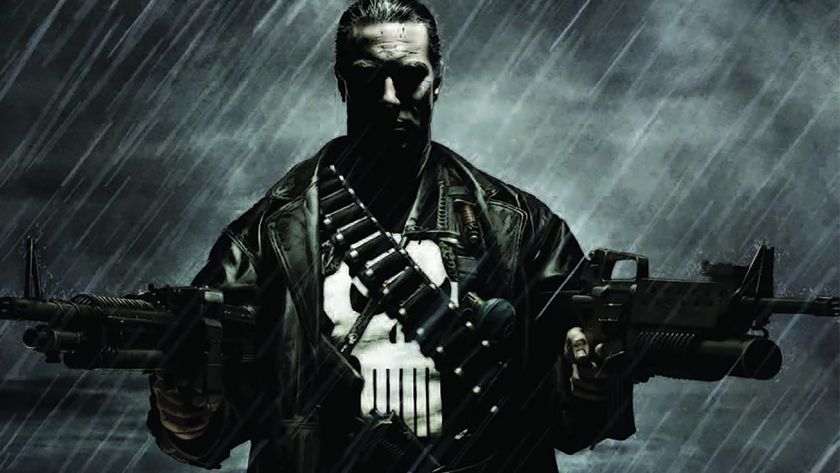
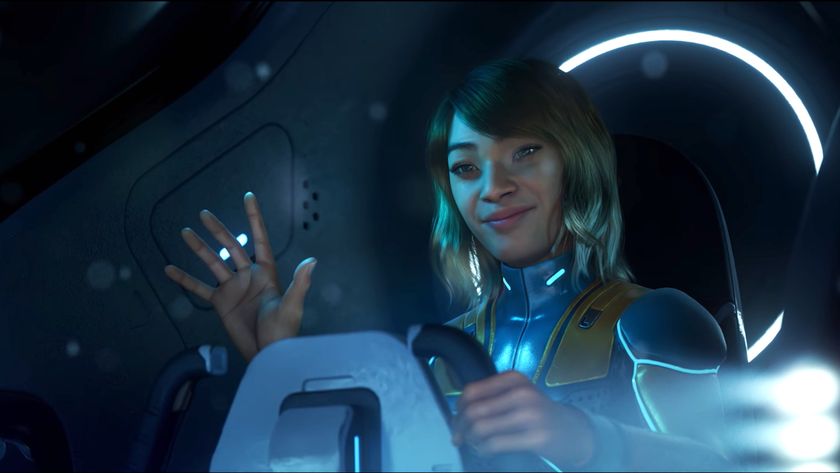
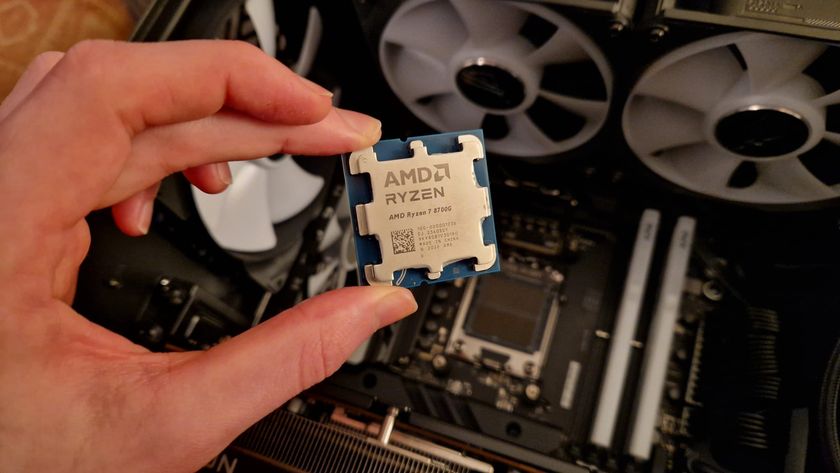
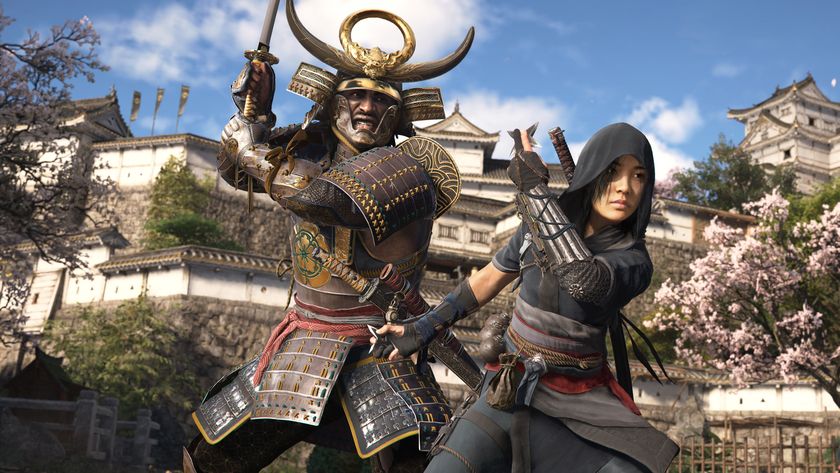
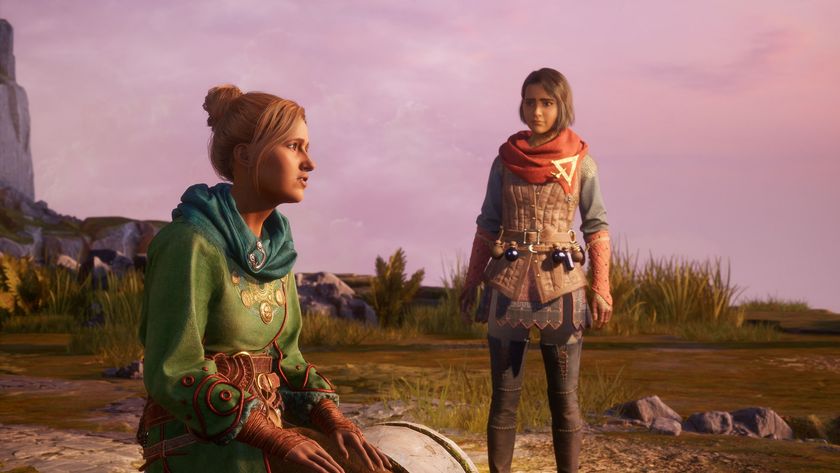


The Boys star Jack Quaid's commitment to the bit is unmatched as his latest marketing stunt for upcoming action movie Novocaine goes viral

The Doctor Doom actor from 2005's Fantastic Four thinks Robert Downey Jr.'s take on the role in the next Avengers movies will be "pretty extraordinary": "I love watching his work"
